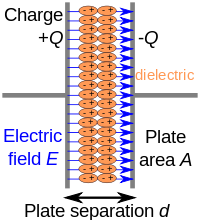
Photo from wikipedia
In order to understand the impacts of discharge conditions on the discharge characteristics of a nanosecond pulsed surface dielectric barrier discharge, the effects of gas pressure, temperature, and velocity are… Click to show full abstract
In order to understand the impacts of discharge conditions on the discharge characteristics of a nanosecond pulsed surface dielectric barrier discharge, the effects of gas pressure, temperature, and velocity are numerically investigated by using a three-equation drift-diffusion model with a 4-species 4-reaction air chemistry. The scaling laws of plasma morphology and gas heating on pressure are obtained for further reduced modeling in the flow-control application. Theoretical discussions on the scaling laws are carefully conducted. When the pressure increases in the studied range, while the temperature is fixed, the streamer propagating velocity ( V), the plasma sheath thickness ( h), the maximum streamer length ( L), the total discharge energy ( Q D _ e i), and the gas heating ( Q G H) decrease. The plasma morphology and the gas heating have different scalings on the pressure according to V ∼ e p, h ∼ p − 0.8, L ∼ p − 0.8, Q D _ e i ∼ p − 0.5, and Q G H ∼ p − 0.5. When the temperature decreases in the in...
Journal Title: Journal of Applied Physics
Year Published: 2019
Link to full text (if available)
Share on Social Media: Sign Up to like & get
recommendations!